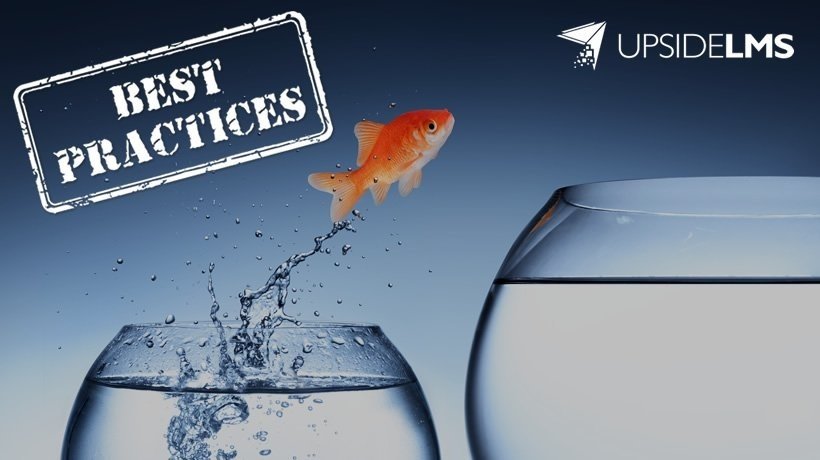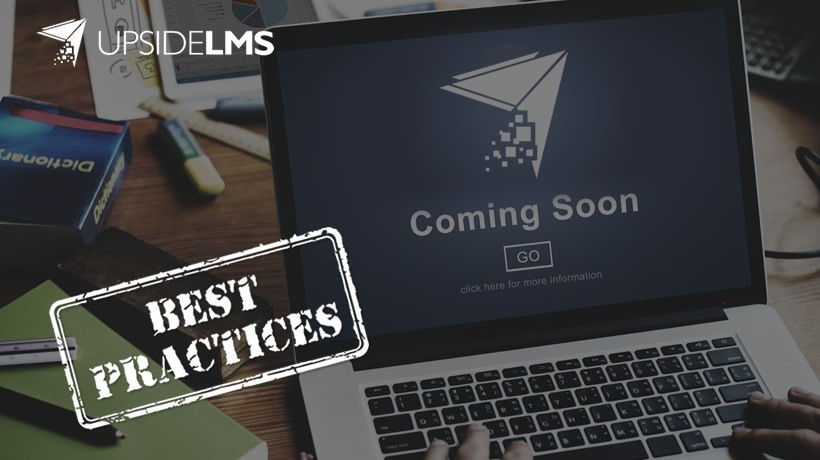Course Management Best Practices: 6 Ways To Maximize The Effectiveness Of Your CMS
If you have a Course Management System in your training organisation, it’s important to make sure you are using it to its full potential to optimise your training performance.
You may only be scratching the surface of the time and effort-saving functionality your CMS could be offering you!
Let’s take a look at the top 6 course management best practices you need to be doing to get the most from your CMS!
1. Create Course Templates
The first way to make sure you are maximising the effectiveness of your CMS is to ensure you create course templates for all the courses you will be running multiple instances of. This could be when you have the same course running at the same time during different time slots, or it could merely be for future instances of the course which you are scheduling in advance.
Course templates will allow you to create a template for each course where you can fill out all the standardised information in advance. This would be things like the name of the course, the certification the student will receive, the length of the course, the course description, etc.
This means that every time you have to schedule another instance of a particular course, you simply pick the relevant template to start with, and you will already have most of the information filled out for you. All you need to do then is fill out the specific information, such as the date, the time, the instructor, etc., and your course is ready to go!
Setting up course templates will save you loads of time in the long run, as you won’t need to enter the same information every single time you set up a course. It also makes it easier for other members of your team to set up future instances of the course, as most of the course-specific information will already be in place for them.
2. Integrate With Your Website
If you’re using a Course Management System, you need to integrate it with your website to ensure you’re getting the most for your money! Integrating your CMS with your website will save you lots of time and also make your job much easier in many ways:
- You only need to enter all the data relating to your courses once, as once it’s been uploaded to your CMS, it will automatically be pulled through to your website.
- Any edits or additions made to your course listings on your CMS will be updated on your website in real-time, so you don’t need to worry about finding all the places the information needs to be edited, or your students viewing incorrect information.
- Your team can be confident they are all working from the same version of your course information, as your CMS will be the central point of reference.
- You can sell your courses online through your website and accept online payments, all without creating any additional work for your team, as everything can be handled automatically by your CRM.
3. Record All Your Resources
One thing that will make your job a lot easier after you’ve done it is to make sure you record all your training resources in your CRM for future reference. While it may take a bit of time to get everything set up in the first place, it will make scheduling your courses so much easier in the future that it’s totally worth it.
Resources should include anything you may need for the training you offer, such as classrooms, textbooks, laptops, projectors, specialist equipment, vehicles – basically anything you need for your classes to run successfully!
This means when the time comes to schedule a course, you can easily pick the resources you need and assign them to a course. This secures your booking for these resources, as no one else will be able to double book a resource once it is assigned to a course. You will also be able to see with plenty of notice if you need to source additional resources before a class runs.
You can also make notes about each of your resources, such as the number of students that will fit in each classroom, or the location of each resource if you have multiple training locations. This ensures that even people who are not familiar with the specifications of each resource will be able to schedule a course and pick the resources that they need with ease.
4. Be As Detailed As Possible
When you’re filling out all your course information in your CMS, make sure you make use of all the fields provided to you so that you can record as much information about your course as possible!
This is a good idea for 3 reasons:
- Your students and prospective customers will be able to get all the information they need from looking at your website, enabling them to decide whether purchasing a training course from you is the right decision for them.
- If students have to get in touch with you with lots of questions about the course, it may slow down the buying process, or encourage them to shop around elsewhere.
- Your team will be able to find all the information they need about a course in one place rather than having to hunt around of specific information.
You can have information displayed within your CMS which doesn’t show on your website, in case you need to record information that is only for internal purposes. Simply pick the fields you want to pull through to your website and leave the rest for internal reference only.
You should also be able to add custom fields to your CMS to ensure you can display all the vital information about your courses on your website.
5. Automate All Your Student Communications
If you want to make your training operation run as smoothly as possible, you need to make use of automated communications. This means that you can set up emails and text messages to send to your students automatically, whenever a certain trigger event happens, to ensure that your students are always kept up to date with all the information they need, but you’re not creating mountains of work for your team!
Much like course templates, you can set up email templates with all the required content in place and use merge fields to ensure all the relevant data for each student is always filled out correctly. Then you pick the trigger event which will cause each email template to send, such as a course sale triggering an invoice email.
This means your CMS can take care of the bulk of your standard emails, all without a member of your team having to keep an eye on them all the time!
6. Move As Much Online As You Can
The last thing you can do to make sure you're following course management best practices is to make sure you move as much of your course documentation online as possible!
This means all your course documents will pull into your CMS, making them easy to find and reference when needed, and meaning you can assign certain documents to particular classes, so they’re really easy to find!
Here are just some of the course documents you can move online with your Course Management System:
- Joining instructions for students rather than sending paper-based instructions.
- Course documents such as reading lists, course descriptions, assessment lists, etc.
- Sign-in sheets.
- Evaluation forms and surveys.
- Certificates.








